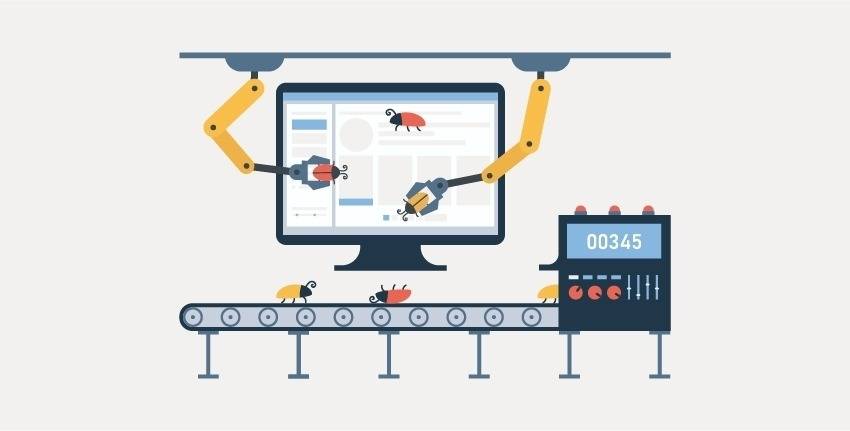The most important thing to keep in mind when using test automation tools is to keep your expectations in check and calibrated. Knowing the strengths and limitations of the software you’re working with can take you a long way. This can help you make some key decisions in the long run. Decisions like, what can and should be automated, how the automating process should be conducted and who’s the right person for the automation task.
The main objective of automation testing is to enable QA technicians and testers to work smarter, not harder whilst utilizing test automation to take developmental efforts to heights that simply couldn’t be transgressed with manual testing.
Even today, despite the field’s established history, you won’t be hardpressed to find CIOs and managers that expect test automation and test management tools to fully automate all product testing, locate all bugs and defects and magically create 100% code coverage. They may also hold a secret belief that they can soon fire all the talented people working for them and hire a chimp.
Misapprehension abounds. Instead, what they should be focusing on is how test automation is a careful process that requires a framework built around it to work efficiently. Let’s look at 5 of the most popular (and most ignored) rules to follow for effective test automation.
1. Automation doesn’t replace a process but reflects it
It’s vital that you don’t confuse test automation or test management tools with vendor tools. Regardless of their supposed capabilities, we believe that any tool can only help you improve a process. Put a sheen on things. An analogous representation of automation tools would be similar to a kitchen blender – being a more efficient medium to combine ingredients than its predecessor, a mortar and pestle. Or any number of power tools for that matter. A builder can utilize power tools to construct a house faster than it would take them with hand tools. But even with a blender at hand or power tools, neither job are completed without a person operating them in the correct manner for the desired outcome.
Instead, it is important to approach test automation as a means to test software for conformance to the QA criteria through which you judge the application as ready to release. Test automation tools give you the opportunity to submit input, analyze the output, and then compare it to a baseline. Simply put, these tools only automate the process that, we hope, you already have in place.
That’s the danger and the opportunity. By automating a good process, you demonstrate how good that process is and by automating a bad process, you amplify its weaknesses.
2. It’s another development project
Treat the test-automation project like all other development projects. This entails producing specifications on what it is capable of doing and what it isn’t, how the code/ modules are designed, and so on.
The automation must be planned, managed, monitored, and supported exactly as real application development projects. It’s just another sort of project development, and thus can be held responsible to equivalent rules and processes as any other type of application development project.
3. Automate the right things
Test automation is a perfect solution in several situations, but don’t force these tools into the incorrect role. Among the positive points: it is a decent mechanism to get repeatable tests, to expand application coverage, to quicken tests on subsequent versions of the software, and to try to perform regression testing.
Automation doesn’t work like magic. Don’t expect to automate everything. Some tasks will inherently require manual testing. For instance, unit, black and white box, system, integration and acceptance testing all inherently come under the banner of manual testing.
The testing part still belongs to the testers. Those professionals are liable for producing the appropriate input to exercise the software, understanding whether the output is both correct and consistent with spec, and searching for bugs.
4. Get the proper people for the job
Apparently, the assumption among many managers is that because the automation tools can essentially do all the work, any intern can run the software. This attitude gets professional testers’ knickers in a twist.
You need the proper staff to run the appropriate tools. As demonstrated with the blender and power tool analogy earlier, this sort of specific work requires specific skills and knowledge. Testers need the right skills to know how to write code, how the software under test is made, and the correct way to approach testing.”
For any nontrivial test-automation project, you would like dedicated personnel. As long as developers are required to split their time between automated and manual testing responsibilities, the test-automation effort never really gets up and running in a very successful manner.
5. Design applications to be tested
Automated or not, QA tests don’t just come out of nowhere unannounced and ready to deploy. Developers are needed to create their software and apps with the prospect of testing in mind. At the very least, they should have clear communication with the business subject-matter experts, the QA technicians, and the development teams.
Another example of the design-for-test method is for QA technicians to set conventions that developers can abide by. Cross-functional teams working in tandem is the ultimate goal of most agile companies and having certain conventions where developers make the lives of QA technicians easier through their practices can go a long way – not just in terms of collaboration, but successful test automation too.


























